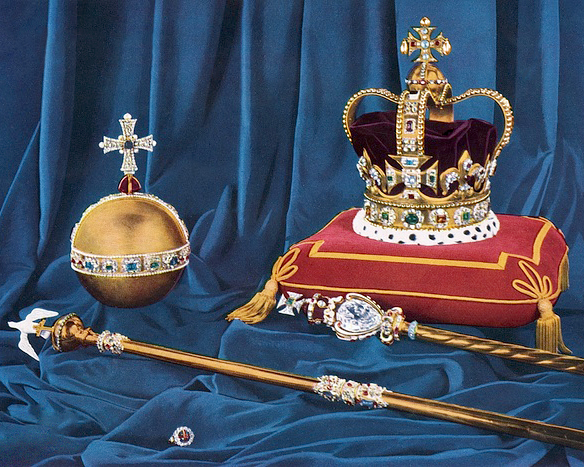
St Edward’s Crown is one of the most recognisable symbols of royalty in the world. Used by British monarchs at the moment of crowning, the history of this relic dates back to the time of Edward the Confessor—who reigned from 1042 to 1066—after whom it was named.
After Edward the Confessor’s death, St Edward’s Crown was used in every coronation ceremony up until Charles I’s coronation in 1626. Afterwards, during the English Interregnum of 1649-1660, the original St Edward’s Crown was either sold and lost to history or melted down as a symbol of a bygone era.
When monarchy was restored in 1660 and Charles II was invited to return to England to reclaim his throne, a new version of St Edward’s Crown was created and used for his coronation. The new St Edward’s Crown was used up until 1689, with the coronation of joint monarchs William III (Mary II was crowned with a smaller diamond crown) and then was not used again until 1911, when George V restored the tradition. Since then, every British monarch has used St Edward’s Crown.
The State Crown of George I was used for the crownings of George I, George II, George III, and William IV; Queen Anne before the Hanoverians used her own small diamond crown; George IV used a specially-made diamond crown created especially for him; while Queen Victoria and Edward VII used a copy of the Imperial State Crown as they found St Edward’s Crown too heavy.
The new St Edward’s Crown was designed by Robert Vyner, the Royal Goldsmith, and is not an exact copy of the original crown. It does mimic some of the style pieces, like the four crosses-pattée and the four fleur-de-lys around its frame.
Of the 444 precious stones used in St Edward’s Crown, the breakdown is: 345 rose-cut aquamarines, 37 white topazes, 27 tourmalines, 12 rubies, 7 amethysts, 6 sapphires, 2 jargoons, 1 garnet, 1 spinel, and 1 carbuncle. Jewels were routinely hired and set for coronations up until 1911, when George V had it installed with permanent stones.
One of the main differences from the original crown is that the arches were designed in a medieval style whereas the new one features Baroque arches. It weighs 2.23 kg.
The crown is considered to be the centrepiece of the Crown Jewels, and when not in use, it is on display at the Tower of London alongside the other jewels. The last time it left the Tower of London was in 2013, for a service at Westminster Abbey that marked the 60th anniversary of The Queen’s coronation—prior to that, it hadn’t left the Tower since 1953.
"; n.innerHTML = "window._taboola = window._taboola || [];_taboola.push({mode:'thumbnails-a', container:'taboola-below-article-thumbnails', placement:'Below Article Thumbnails', target_type: 'mix'});"; insertAfter(t, e); insertAfter(n, t) }injectWidgetByMarker('tbmarker');

